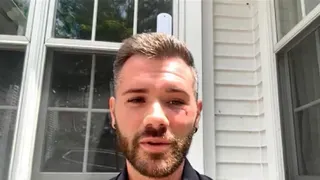August 16, 2010
Gulf seafood gets intense safety testing
Kilian Melloy READ TIME: 4 MIN.
Seafood from the Gulf of Mexico is being put under the microscope like no other kind on the market, with fish, shrimp and other catches ground up to hunt for minute traces of oil - far more reassuring than that sniff test that made all the headlines.
And while the dispersant that was dumped into the massive oil spill has consumers nervous, health regulators contend there's no evidence it builds up in seafood - although they're working to create a test for it, just in case.
More Gulf waters are reopening to commercial hauls as tests show little hazard from oil, and Louisiana's fall shrimp season kicks off Monday. Yet it's too soon to know what safety testing will satisfy a public so skeptical of government reassurances that even local fishermen voice concern.
Basic biology is key: Some species clear oil contamination out of their bodies far more rapidly than others. Fish are the fastest, oysters and crabs the slowest, and shrimp somewhere in between.
"I probably would put oysters at the top of the concern list and I don't think there's a close second," said marine scientist George Crozier, who directs the Dauphin Island Sea Lab in Alabama.
The oil contaminants of most health concern - potential cancer-causing substances called polycyclic aromatic hydrocarbons, or PAHs - show up in other everyday foods, too, such as grilled meat. Low levels also are in seafood sold from other waters.
Where Gulf seafood harvesting has been reopened, "the levels that we see are pretty typical of what we see in other areas, Puget Sound or Alaska," said Walton Dickhoff, who oversees testing at the National Oceanic and Atmospheric Administration's Northwest Fisheries Science Center in Seattle.
Here are some questions and answers about Gulf seafood safety:
Q: What are PAHs?
A: They're common pollutants from oil, vehicle exhaust, wood-burning fires and tobacco smoke. They can be in food grown in polluted soil and form in meat cooked at high temperatures. In fact, NOAA research found that Alaskan villagers' smoked salmon, a staple food, contained far more PAHs than shellfish tainted by the Exxon Valdez spill.
Q: How does the government decide it's safe to reopen fishing waters?
A: Seafood testing begins when there's no longer visible oil in a particular area. First, inspectors smell samples for the slightest whiff of oil. Step 2 is chemical testing at the Food and Drug Administration, NOAA, or state laboratories.
To reopen seafood harvesting, the samples must test below FDA-set "levels of concern" for 12 different PAHs, based on how much someone would have to eat for a potential health risk, and how much of each food fairly heavy seafood consumers tend to eat in a month. Well over 1,200 samples have been tested with many more on the way, each sample containing multiple individual fish, shrimp, crab or oysters.
Q: With so much oil in the Gulf, how could fish emerge untainted?
A: Commonly consumed fin fish - like grouper, snapper and tuna - rapidly metabolize those PAHs. That's been known for years and tracked during other oil spills, and the reason that fishing is being allowed first in reopened waters.
Consider the PAH naphthalene. The safe limit is 3.3 parts per billion. The highest levels found in recently reopened waters off the Florida panhandle were well below that, 1.3 ppb, mostly in red snapper.
Q: Why haven't crabs and oysters been cleared?
A: They're the slowest metabolizers, plus crabs require an extra testing step that FDA hasn't finished.
Oysters are probably the best absorbers of oil, as they take in both droplets and dissolved oil, said Carys Mitchelmore, an aquatic toxicologist at the University of Maryland Center for Environmental Science.
Most oyster testing is just beginning, so stay tuned, although the FDA recently cleared some from Alabama that contained less than a quarter of the total PAH limit of 66 parts per million.
Q: But what about that controversial dispersant - are the feds testing for it?
A: Not yet; they're still developing a good test.
Q: So why do they say dispersant isn't a seafood threat?
A: Some dispersant chemicals are FDA-regulated ingredients in skin creams and even foods. FDA contends the stronger cleansing ingredients under question degrade too quickly in water to accumulate in fish flesh. In experiments under way in Texas and Alabama, federal scientists are dumping dispersant into tanks full of shrimp, oysters and crabs to try to detect even minute levels.
Still, some critics say a test is needed.
"Make this as comprehensive as possible," says Susan Shaw of the Marine Environmental Research Institute in Maine. "It's trying to make sure the needle in the haystack is not there."
But the dispersant broke oil into smaller, easier-to-absorb droplets, meaning oil tests would detect seafood exposed to lots of dispersant, Dickhoff said.
"We believe the science is very compelling that there is not a human health concern for fish consumption with respect to dispersants," added Donald Kraemer, who oversees FDA's Gulf seafood testing.
The PAH testing reassures Maryland's Mitchelmore: "At the end of the day, the oil is the toxic entity."
Q: What if storms stir oil back into reopened waters?
A: "We will continue to test as long as it's needed," said NOAA Administrator Jane Lubchenco.
Q: Wouldn't the cautious approach be to eat seafood caught elsewhere for a while?
A: Seafood caught elsewhere can have different pollution issues. Most U.S. seafood is imported and the FDA inspects only a fraction of it.
___
Associated Press writers Mary Clare Jalonick in Washington and Phuong Le in Seattle contributed to this report.
Kilian Melloy serves as EDGE Media Network's Associate Arts Editor and Staff Contributor. His professional memberships include the National Lesbian & Gay Journalists Association, the Boston Online Film Critics Association, The Gay and Lesbian Entertainment Critics Association, and the Boston Theater Critics Association's Elliot Norton Awards Committee.






